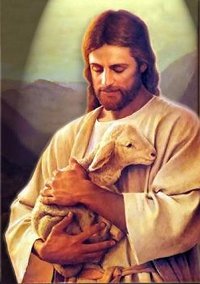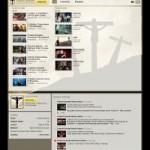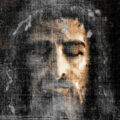
While Catholics are sometimes less able to quote “chapter and verse,” they often know more of the Biblical stories than many non-Catholics. This seems particularly true of the Old Testament. We believe that the Old Testament foretells the New Testament and the New Testament fulfills the Old Testament.
One really good example of this is the Last Supper and Passion of Our Lord. There are actually several applicable Biblical stories, but one especially stands out for me. That is, the story of Passover.
First, the “backstory.” The time is around 1441 BC. The Israelites, God’s chosen people, had fallen on hard times and been enslaved in Egypt. Moses, an Israelite by birth, has been raised since infancy by an Egyptian Princess (long story).
Moses will be successful in winning freedom for the Israelites. When he does, they will leave Egypt. The pharaoh will have a change of heart, ordering his army to pursue and kill them. God, working through Moses, will part the Red Sea and they will escape. The Egyptian army will have a bad day. The Jews will wander in the desert for 40 difficult years before coming to the promised land.
Before all of that, the Israelites must be freed. Moses witnesses the beating of a Israelite slave and kills the attacker. This did not sit well with the pharaoh and Moses leaves. The Lord remembers His promise to His people and called upon Moses (through the burning bush) to free them. Moses approaches the pharaoh but he refuses. God worked through Moses to pressure the pharaoh in a series of plagues (water turned to blood, frogs, lice, hordes of wild animals, diseased animals, boils, violent hailstorm, swarms of locusts and blanket of darkness).
Okay, we are finally up to a plague that will finally convince the pharaoh. An angel of death will visit every house and every first-born will die. No exceptions, other than those who know the only means of protection that God tells Moses as explained in Exodus 12:1.
To protect themselves, the Israelites are to select a lamb for sacrifice. It must be a male without defect. No bones were to be broken in its slaughter. They must eat the flesh that night with unleavened bread. They are to also take hyssop branches, dip them in the blood of the lamb and mark the lintel and doorposts of their homes with it.
That evening, the angel passed throughout Egypt taking the firstborn. However, the Israelites were spared by following God’s word through the marks on their homes and receipt of the passover meal.
In the morning, there was a great cry in Egypt as every home except the Israelites’ was touched by death. With the death of his own son, the pharaoh was finally convinced and the Israelites were freed after 400 years.
The Passover foretells the crucifixion of the Lamb of God in many ways:
- in the Jewish Passover celebration, the lamb is selected 5 days before slaughter – Jesus entered Jerusalem 5 days before His crucifixion
- the Passover lamb was a “male without defect” – the same description applies to Jesus
- the Passover lamb is faultless as is Jesus
- for the previous 1,200 years a priest would blow a horn at 3:00pm when the lamb was to be slaughtered – Jesus died at 3:00pm
- the lamb must have no bones broken – Jesus bones were not broken at His crucifixion
- Passover consumes unleavened bread and a lamb – at the Last Supper, the unleavened bread becomes the body of Christ
- the Passover meal must be consumed as must the Eucharist
- Passover gave victory over the bondage of slavery – the crucifixion gave victory over the bondage of sin
- Passover freed people to the promised land – the crucifixion freed people to eternal life
- the Passover lamb’s blood was shed to avoid death – Jesus’ blood was shed to spare us from death (the consequence of sin)
There are other striking similarities too. Additionally, many find meaning in other aspects of the Seder (Passover) meal – particularly the 3rd and 4th cups. That will be a good topic for another post.
One final thought… many ask if we could substitute grape juice for wine or crackers for unleavened bread. If that had been done at the Passover, the family would have awoken to find their oldest son dead. No substitutions!



























If you're thinking about Catholicism this way, you should be in the classroom teaching it to the kids.
I am no expert, but do co-teach CCD (I hate calling it Religious Education as that is such a generic term) for 15 kids. This is a topic we covered recently and it occurred to me to be a good one to mention here.